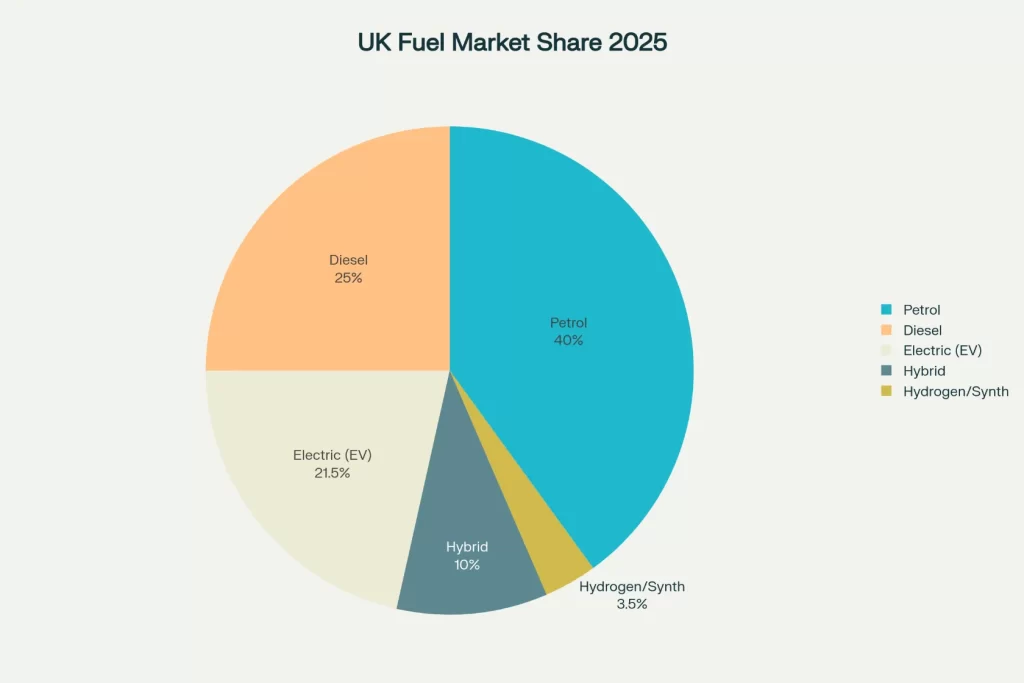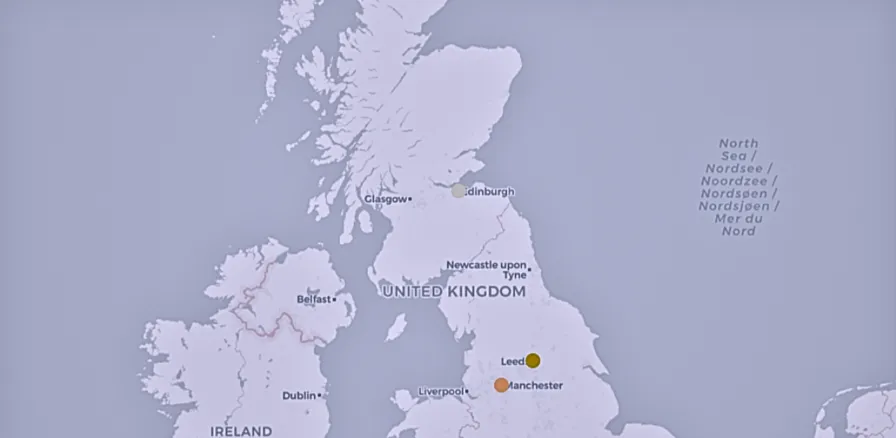The Future of Fuels in the UK: What Are People Choosing?
Introduction
The fuel landscape in the UK is changing quickly. This change is driven by shifting consumer preferences, proactive government policies, and new technologies. As we head into 2025, British drivers have more options than ever, including traditional petrol and diesel, electric, hybrid, and new alternative fuels. This blog post looks at the fuel choices people in the UK are making, the trends influencing these decisions, and their implications for the future.
Key Trends in UK Fuel Choices
1. Electric Vehicles (EVs) Surge Ahead
Record Adoption: In June 2025, electric vehicles (EVs) made up one in four new car sales in the UK, marking a significant milestone. Over 1.5 million battery electric vehicles are now on UK roads.
Government Mandates: The Zero Emission Vehicle (ZEV) mandate requires that 28% of new cars sold in 2025 must be electric, with these targets increasing each year until 2035 when all new cars must be zero-emission.
Infrastructure Growth: The number of public charging points has grown sharply, with over 80,000 now available nationwide to support the increasing demand for EVs.
2. Petrol and Diesel: Still Present, But Declining
Price Trends: The average petrol price in the UK at the end of May 2025 was 132.0 pence per litre, and diesel was 138.4 pence per litre. Both prices were lower than earlier in the year, but subject to fluctuations.
Market Share: While petrol and diesel vehicles are still common, their market share is decreasing as more consumers choose cleaner options.
Supermarkets Lead on Price: Supermarkets are offering the best fuel prices, often several pence per litre cheaper than other retailers.
3. Hybrids and Alternative Fuels
Hybrid Vehicles: Hybrids remain a popular choice for drivers not ready to switch fully to electric. They provide lower emissions and better fuel efficiency.
Hydrogen and Synthetic Fuels: Interest in hydrogen and synthetic fuels is increasing, especially for heavy transport and aviation. However, these options are still in the early stages of adoption.
What’s Driving These Choices?
Environmental Awareness
The UK aims to achieve 95% clean electricity by 2030. The upcoming ban on new petrol and diesel cars in 2030 also motivates consumers to choose greener fuels.
Cost and Incentives
Lower Running Costs: Electric and hybrid vehicles generally have lower running and maintenance costs compared to petrol and diesel.
Government Support: Grants and incentives, like the Plug-in Van Grant and infrastructure funding, make it easier and more affordable to switch to greener vehicles.
Policy and Regulation
Fuel Finder Scheme: The government plans to launch a ‘fuel finder’ tool to help consumers compare real-time fuel prices, which will increase transparency and competition.
Sustainable Aviation Fuel: New mandates are also guiding the aviation sector towards sustainable fuel options, further diversifying the fuel market.
Conclusion
The fuel landscape in the UK is undergoing a major change. While petrol and diesel still exist, electric vehicles are increasingly becoming the preferred choice for many. This shift is backed by strong government policies, expanding infrastructure, and growing environmental awareness. As new technologies like hydrogen and synthetic fuels develop, UK consumers will have even more options, paving the way for a cleaner and more sustainable future for transportation.
Explore More About UK Fuel Future ↗


The line chart clearly illustrates the weekly fluctuations of petrol and diesel prices throughout the first half of 2025, showing diesel consistently priced higher than petrol, with both fuels experiencing moderate volatility influenced by global market factors. The Folium map highlights regional disparities in fuel prices across the UK, with Northern Ireland showing the lowest average prices and England the highest, reflecting regional market variations and distribution costs. Finally, the Contextily map overlays sample EV charging station locations on a detailed London basemap, emphasizing the growing infrastructure supporting the UK’s transition to electric vehicles. Together, these visuals provide a comprehensive picture of current fuel pricing trends, regional differences, and renewable energy infrastructure shaping the UK’s fuel landscape in 2025.